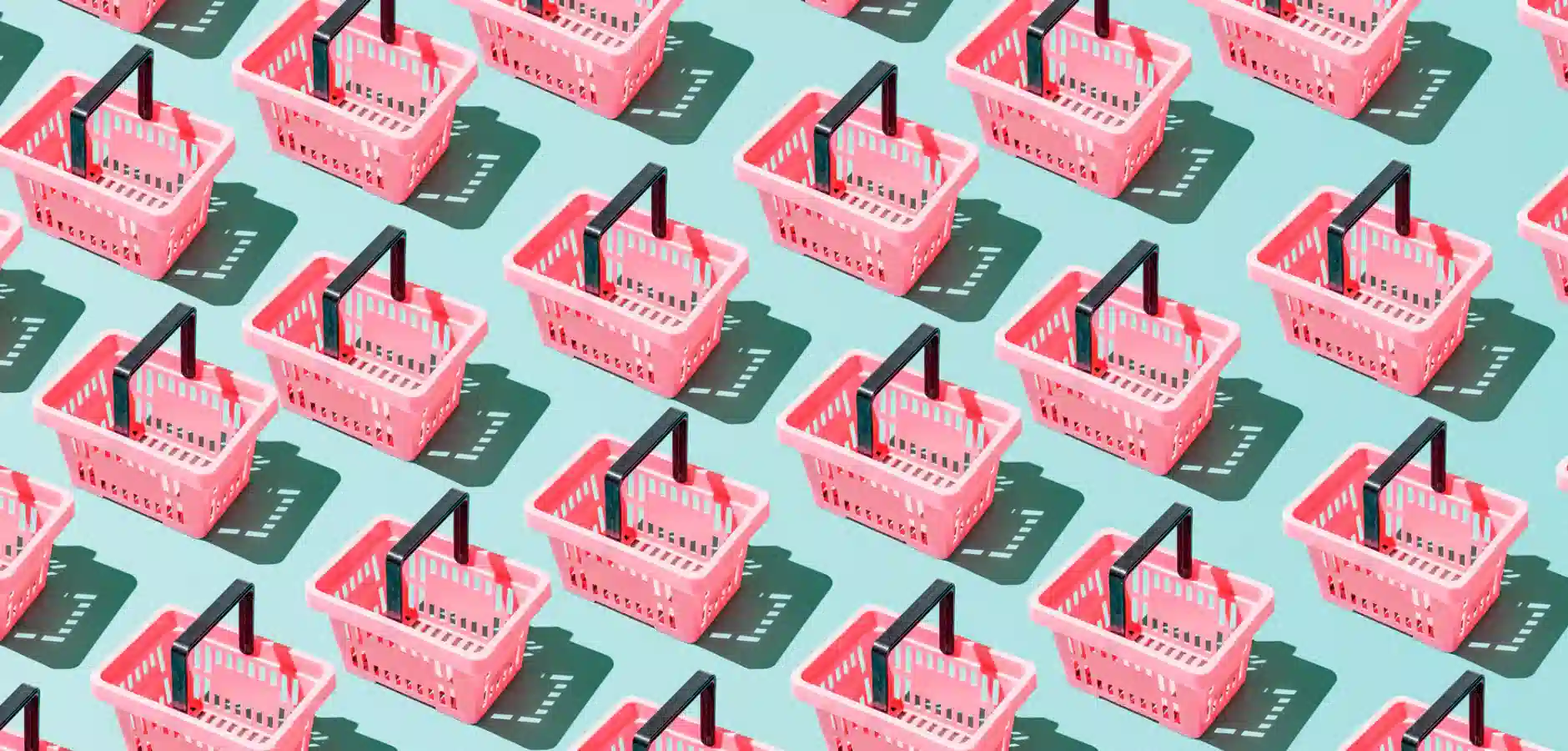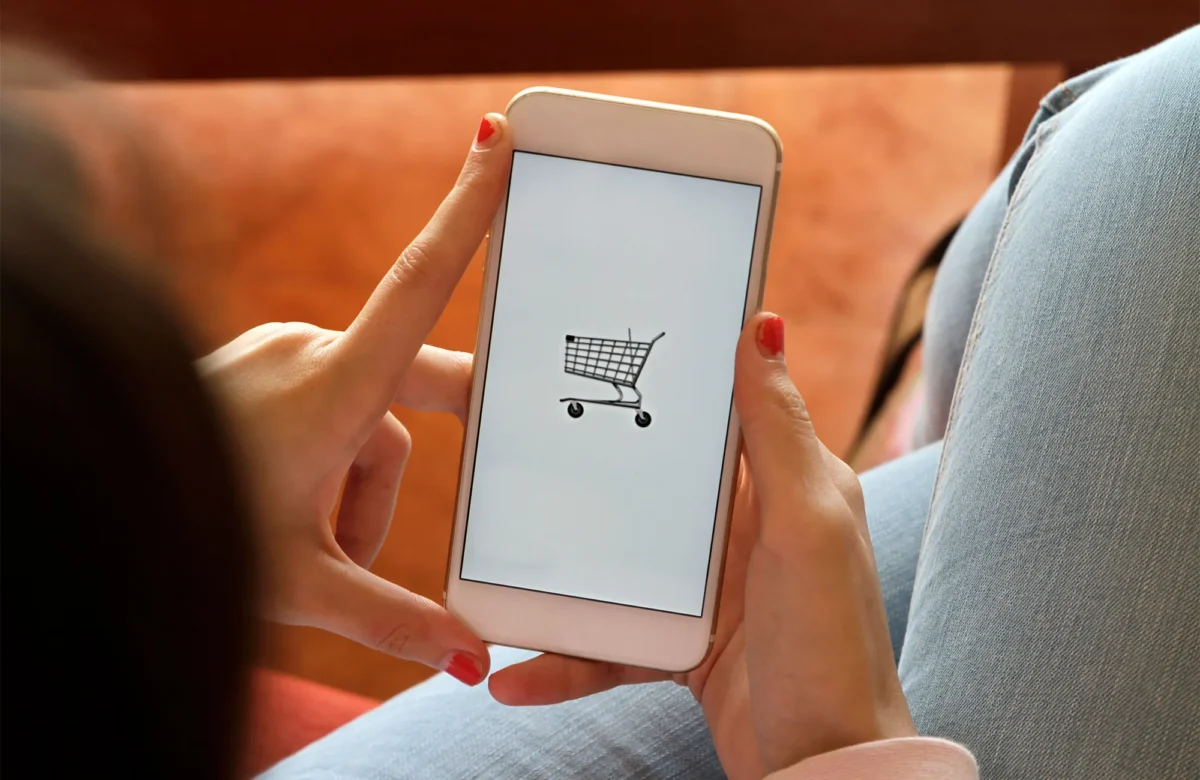Black Friday and Cyber Week offer enormous affiliate potential—but your competition isn’t just other publishers and creators anymore. You’re now up against AI chatbots that instantly compare prices across hundreds of retailers, tons of creators who showcase products in 15-second videos, and Buy Now, Pay Later options that make $500 purchases feel like $125.
And your audience isn’t shopping the way they did three years ago. They’re starting holiday research in September, asking ChatGPT to find the best deals, and discovering products through social media before turning to trusted experts for validation. The ones capturing the biggest share of affiliate revenue understand these new shopping patterns and structure their content accordingly.
The numbers prove the stakes. U.S. online consumers spent a record $241.4 billion during the 2024 holiday season, up 8.7% from 2023. But that growth wasn’t distributed evenly. Those who aligned their strategy with how consumers actually research and buy saw significant gains, while those clinging to outdated approaches watched traffic and commissions decline.
This research reveals exactly how to position yourself among the winners. Based on a survey of over a thousand U.S. holiday shoppers, you’ll discover when consumers start researching (earlier than you think), which content formats drive conversions (some might surprise you), and what deal types motivate purchases—giving you the data-backed insights to maximize your affiliate revenue when it matters most.
- Methodology
- Trend 1: Shoppers spread purchases across the entire season
- Trend 2: The right content drives product research
- Trend 3: The right deals make shoppers open to new brands
- Trend 4: Shoppers are using AI and BNPL options
- Trend 5: Niche product categories present new opportunities
- Follow your roadmap to a record-breaking holiday season
- FAQs
Methodology
The impact.com market research team conducted this holiday shopping study in June and July 2025, analyzing the survey results of 1,105 U.S. consumers aged 18 and older. All participants shop at least partially online and confirm that they plan to make online purchases during the upcoming holiday shopping season in November and December.
The following insights are based on their responses, providing a data-driven roadmap for your holiday content strategy.
Trend 1: Shoppers spread purchases across the entire season, not just one week
Cyber Week remains the peak of the season—but it’s not the whole story. Holiday shopping now stretches over months, not days.
Early planning is now the norm. More than half of consumers (51%) start researching products by the end of October, and by mid-November, three-quarters (75%) are already mapping out their buys.
Meanwhile, the last-minute holiday rush continues to shrink. Only 12% of shoppers wait until late November or Cyber Week to start planning their purchases, and only 3% hold off until December. True impulse shopping is rare, with 1 in 10 consumers doing research the week they plan to buy or not researching at all.
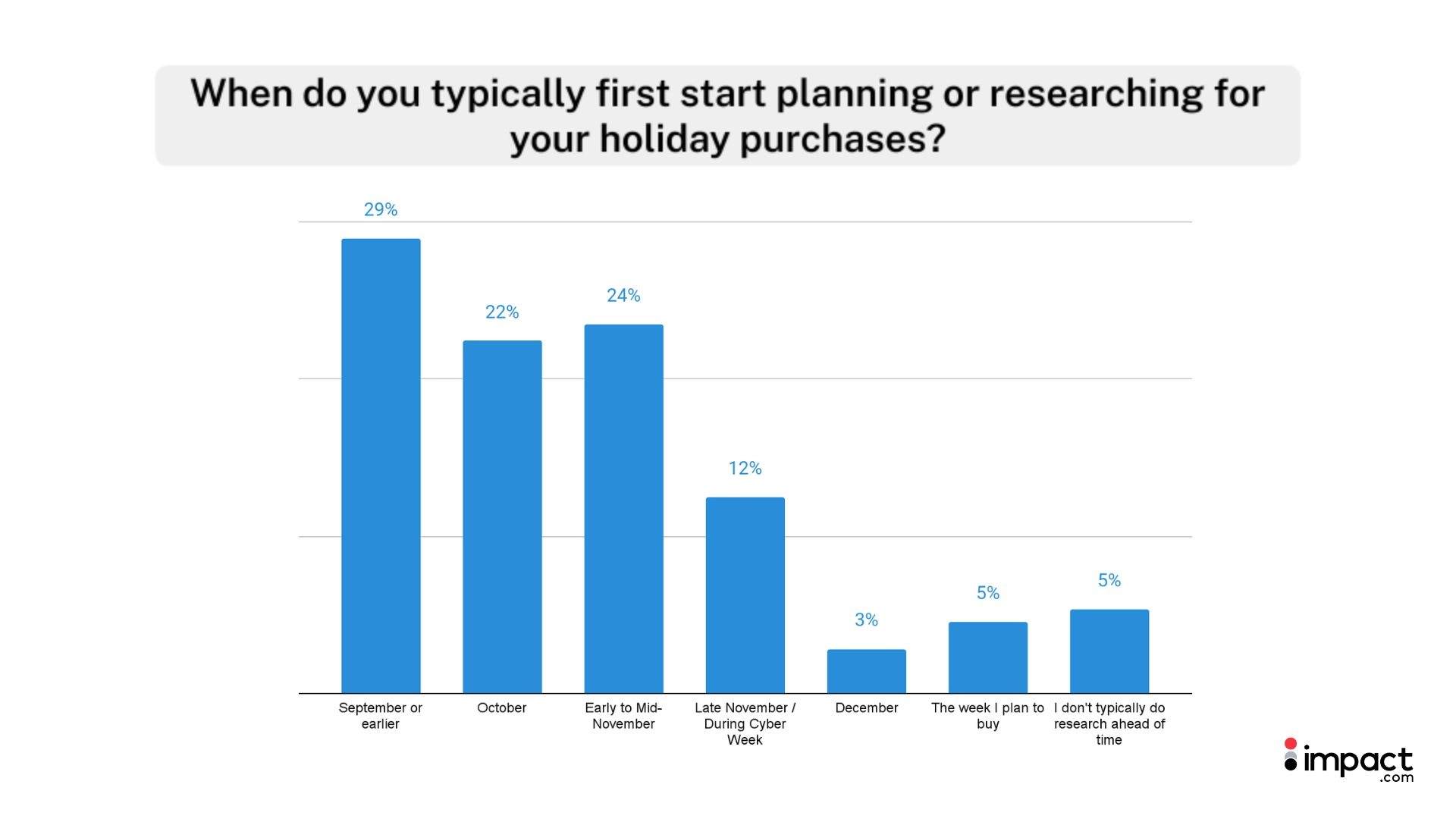
A longer research and shopping window doesn’t mean that Cyber Week is losing steam—88% of shoppers still plan to buy during Cyber Week. But 92% will also make purchases outside of that timeframe, of which 13% choose to skip the event entirely and shop only at other times.

Post-event momentum is real, with 71% likely to buy between Cyber Week and Christmas, driven by the hunt for better deals (47%) or last-minute gifting needs (46%).
This presents publishers and creators with a significant post-Cyber Week opportunity. Almost three-quarters (71%) of shoppers report they’re likely to make purchases after Cyber Week but before Christmas. They’re often motivated by the hunt for better deals (47%) or the need for last-minute gifts (46%).
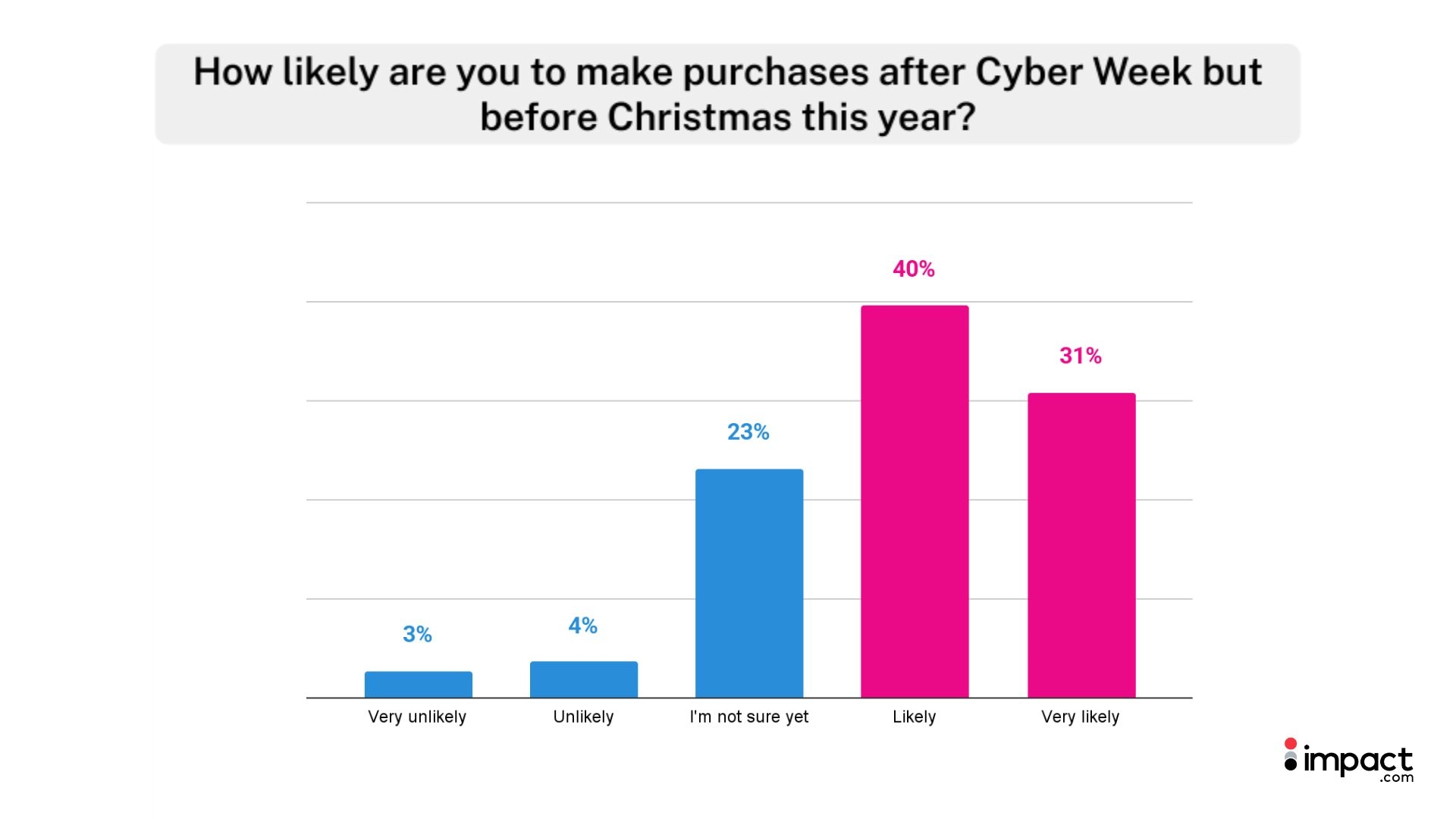
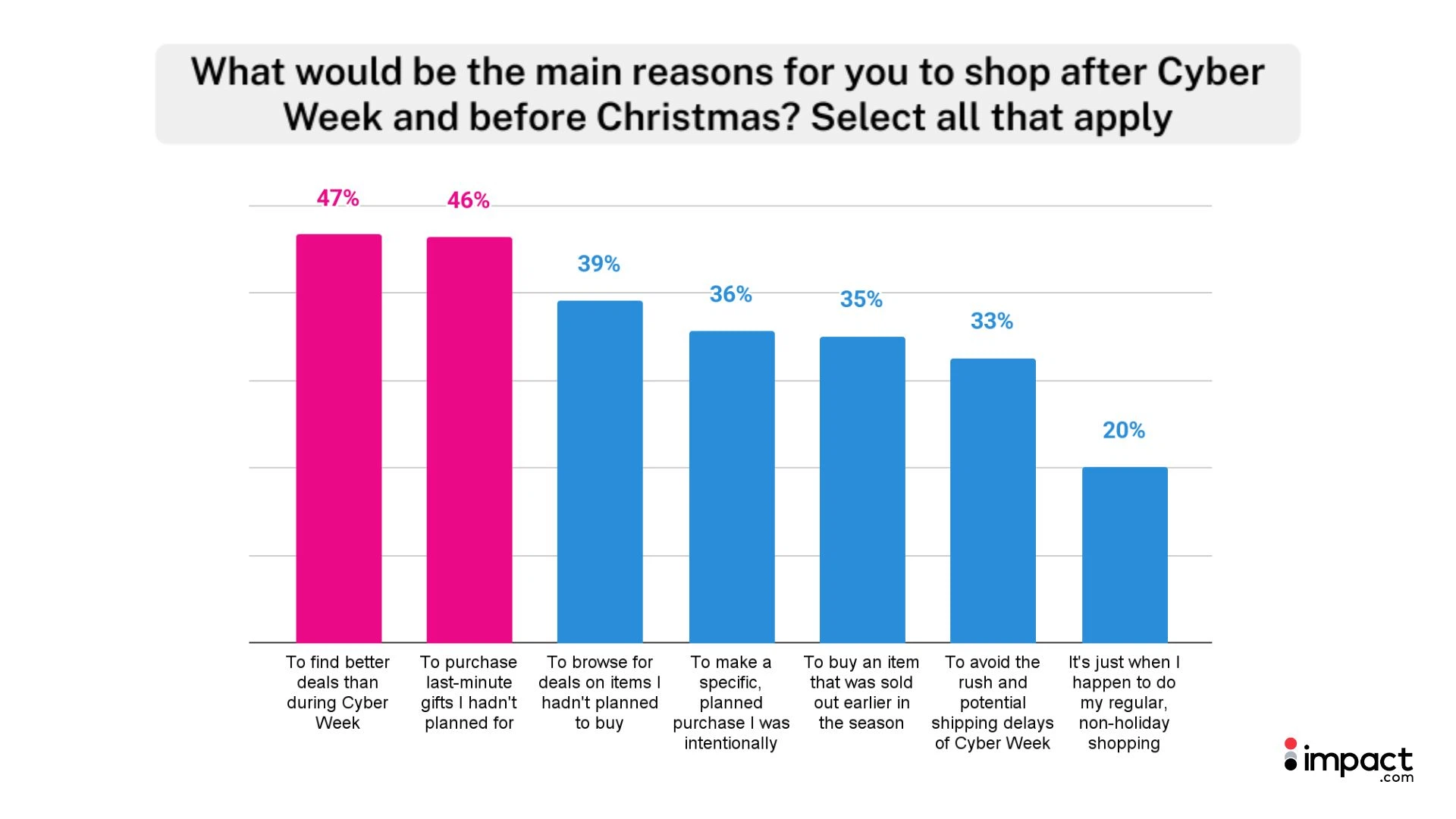
How to take action
Capture the early researcher
Start rolling out foundational content in September and October.
- For publishers, that means launching gift guides, product reviews, and comparison articles early to capture SEO traffic before competitors.
- For creators, short-form videos, unboxings, and ‘early bird’ holiday wishlists are a great way to hook audiences in their feeds.
By then, half your audience will already be starting their buyer’s journey—prime time to rank for holiday keywords and secure a spot in their feeds. Frame your content around “beating the rush” to spark early-season urgency.
Refresh your greatest content hits
Don’t start from scratch. Identify your top-performing holiday content from last year and give it a refresh for 2025. Boost your SEO advantage and capture early search traffic by:
- Adding relevant new products
- Updating existing product links
- Confirming that all highlighted products are in stock
- Layering in new details
Creators can keep it simple: film a “2025 Edition” of a top holiday video or reshare a proven post with a sharp new caption and fresh affiliate links.

Goop’s robust 2024 holiday gift guides could easily be refreshed using last year’s analytics to boost performance with minimal effort this season.
Build a full-season content calendar
Match your content to the shopper’s timeline.
- Early season: Drive discovery with “Early Bird Gift Guides” and unboxing videos to pique interest.
- Cyber Week: Turn up the urgency with time-sensitive content like deal alerts and live shopping streams.
- December: Capture procrastinators with last-minute solutions—think digital gift cards promoted through articles, Reels, or Stories.
Don’t forget the self-gifter
The holidays aren’t just for gifting—nearly half of shoppers (44%) are buying for themselves too. They’re hunting for seasonal deals, and you can meet them where they are:
- Publishers can lean in with content that taps this mindset—think “The Best Cyber Week Deals to Treat Yourself.”
- Creators can seize the opportunity to get personal: film a “My Holiday Wishlist” video or a “Shop With Me” session that highlights the deals you’re snagging for yourself.

Trend 2: Content drives product research—if you create what shoppers are looking for
During the holiday shopping season, your content isn’t just influential—it’s driving consumer decisions.
In 2025, publishers will be the go-to resource for shoppers, with 59% planning to rely on online articles, gift guides, and product reviews from trusted experts. That puts your content squarely at the center of the buyer’s journey.
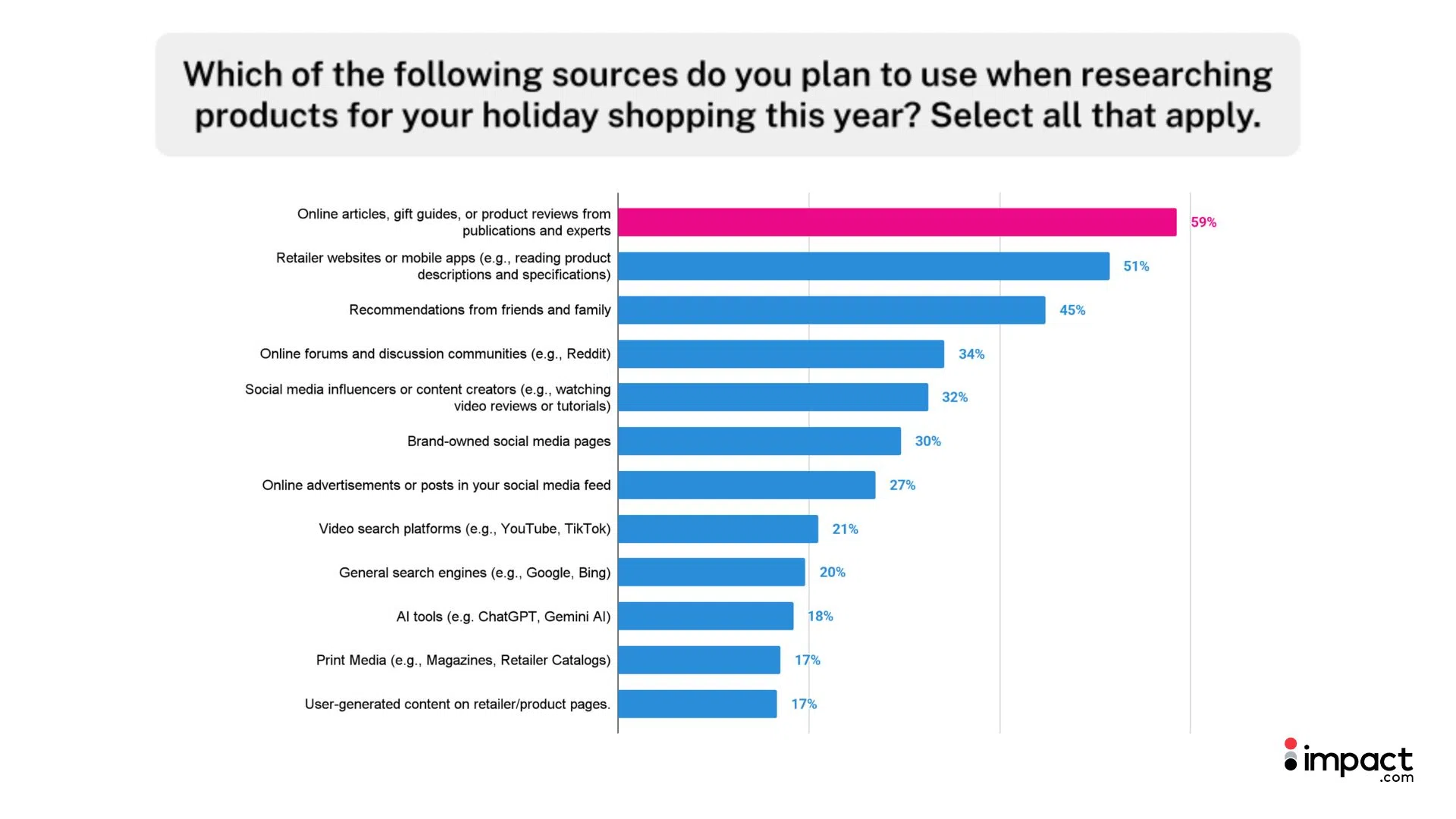
When shoppers research products, they find some formats more helpful than others. Once they’ve skimmed the basics in product description, images, and technical specs from the retailer’s website (46%), they seek deeper analysis and validation. Some of the content formats they find most helpful are:
- Written reviews from publications or expert blogs (30%)
- Comparison content that breaks down pros and cons across products (26%)
- Video reviews or demonstrations that show products in action (25%)

Articles and expert reviews help about a quarter of shoppers (26%) find new products, but social media is where inspiration explodes—especially among younger audiences. Over half of Gen Z shoppers (52%) and nearly half of Millennials (44%) discover items from influencers and creators. This offers a major monetization opportunity for savvy creators like you.
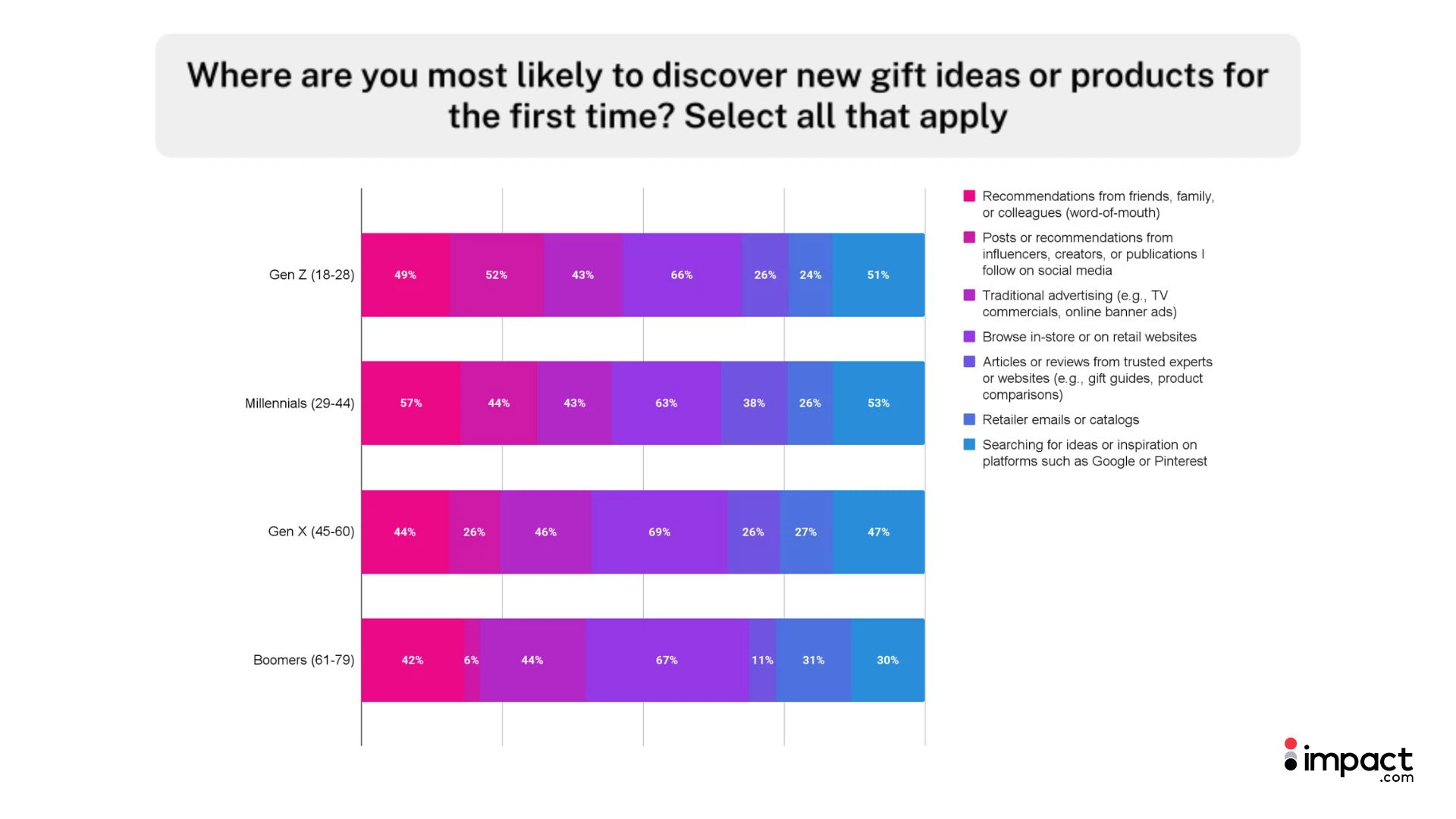
How to take action
Double down on in-depth reviews
Consumers crave helpful content—and they trust it. Put your energy into the formats shoppers find most valuable: comprehensive reviews, “Product X vs. Product Y” comparisons, and authentic video demos that show products in real-life use. These content types build authority and move audiences from browsing to buying.
This video by creator Chloe Swift is a great example of a high-quality review, blending hands-on testing with clear, unbiased insights. The creator explains features in detail, compares real-world performance, and provides enough context for viewers to make confident purchase decisions.
Optimize for the final decision
While consumers use multiple sources during their research phase, general search engines are the source they rely on most. Despite the rise of AI and the disruption in search engine marketing, a robust SEO strategy remains non-negotiable.
Go beyond surface-level keywords and optimize your content for long-tail, intent-driven queries like “Is [Product Name] durable enough for kids?” or “best camera under $500 for beginners.”
This approach isn’t just for publishers. Creators should think search-first, too. Many consumers, especially in younger demographics, use social platforms like search engines, and many posts are now surfacing directly in Google results. Write SEO-optimized captions to expand your content’s visibility beyond the feed and into search.
Connect social discovery to conversion content
On TikTok, Instagram, and YouTube, creators shine as discovery engines. Use short-form videos to capture attention and spark inspiration—but don’t stop there. Always point viewers to the in-depth content that closes the loop. A 30-second Reel can show off a product’s look and feel, but the linked blog post or 10-minute YouTube review is where conversions happen.
Negotiate compensation that reflects your value
The “standard last-click” model undervalues the discovery and research phases where your content does the heavy lifting. Most consumers (75%) begin their holiday shopping research before mid-November, and they typically consult 3–4 different sources along the way.
The buyer’s journey also isn’t linear—often switching between online and offline touchpoints before making a purchase. For example, 49% of consumers research online but buy in-store, while 25% research in-store but purchase elsewhere online. That means your influence may drive consideration and intent long before the final click.
Push for compensation models that reflect your role across the funnel:
- Hybrid payouts: Since shoppers start researching months ahead and consult multiple sources, a flat fee ensures you’re paid for the upfront content that shapes decisions, while a commission rewards you for closing sales.
- Commission increases: With so many shoppers relying on early research, your position as a top validation source justifies higher rates.
- First-touch bonuses: Because consumers move fluidly between channels, first-touch or multi-touch models ensure you’re recognized for driving discovery—even when the purchase happens elsewhere.
Dig into your own performance data to identify where your content drives the most impact—early research, mid-funnel validation, or final conversion. These insights give you a data-backed case when negotiating with brands.
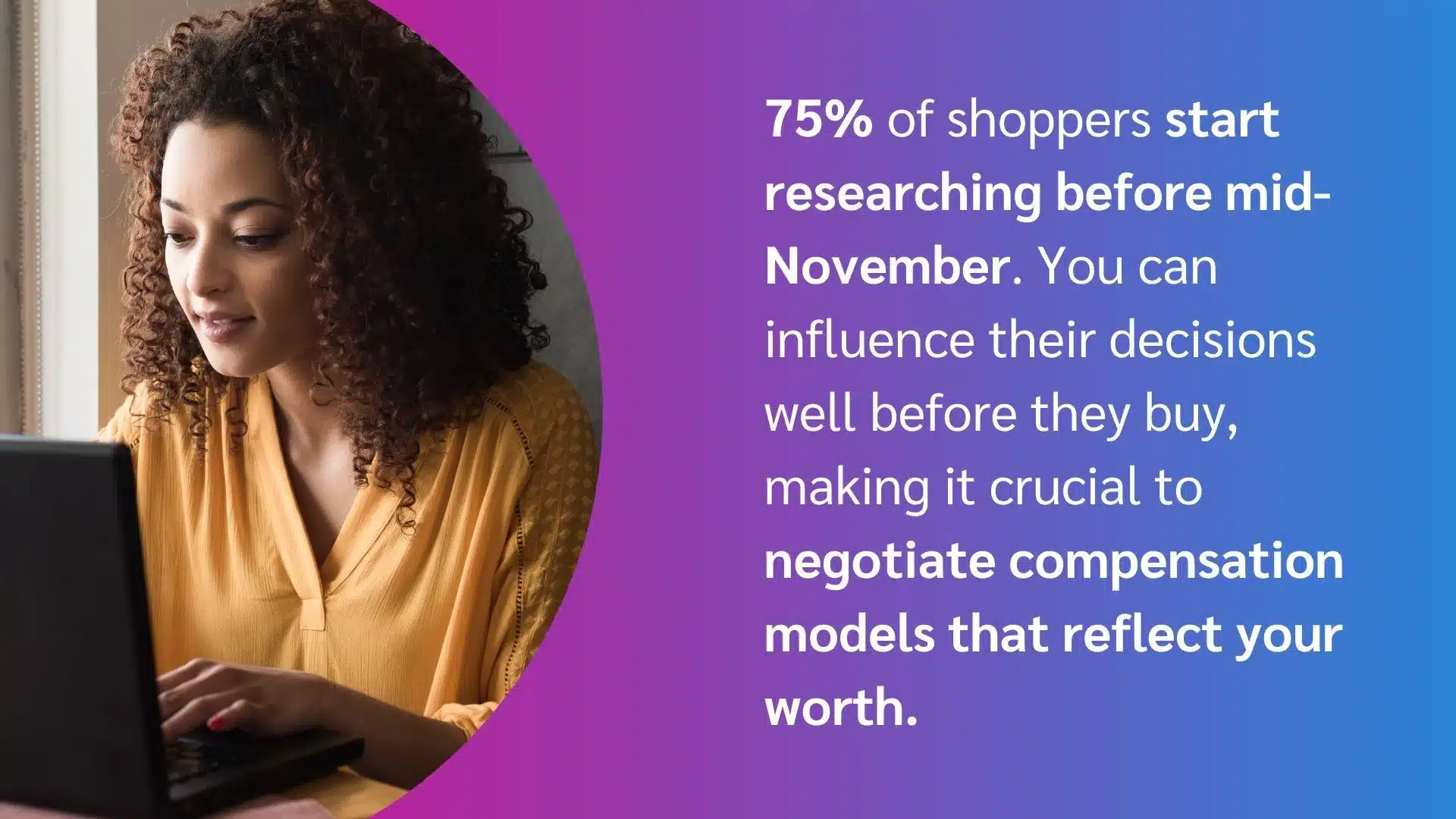
Trend 3: Shoppers are open to new brands—when they get the right deal
While brand loyalty still matters, most holiday shoppers can be swayed by the right offer. Over half (57%) say they’re open to trying new brands if the product or promotion is compelling enough. That’s your chance to spotlight new products—as long you can lead with offers that actually motivate a purchase.
Understanding which deals cut through the noise is one of the most beneficial holiday shopping trends you can use to motivate sales. So what offers work best?
- Free and reliable shipping is the undisputed champion, ranked as the single most-preferred deal
- Flash sales and percentage discounts on single items tie for second
However, discount depth matters. For mid-range items ($50–$200), most consumers (36%) would be motivated by 26-40% off, making a flat 20% code less effective.
In contrast, for everyday purchases under $50, the majority of consumers (37%) would convert at a 16–25% discount. This means a standard 20% off promotion is usually enough to drive sales for items at this price point.
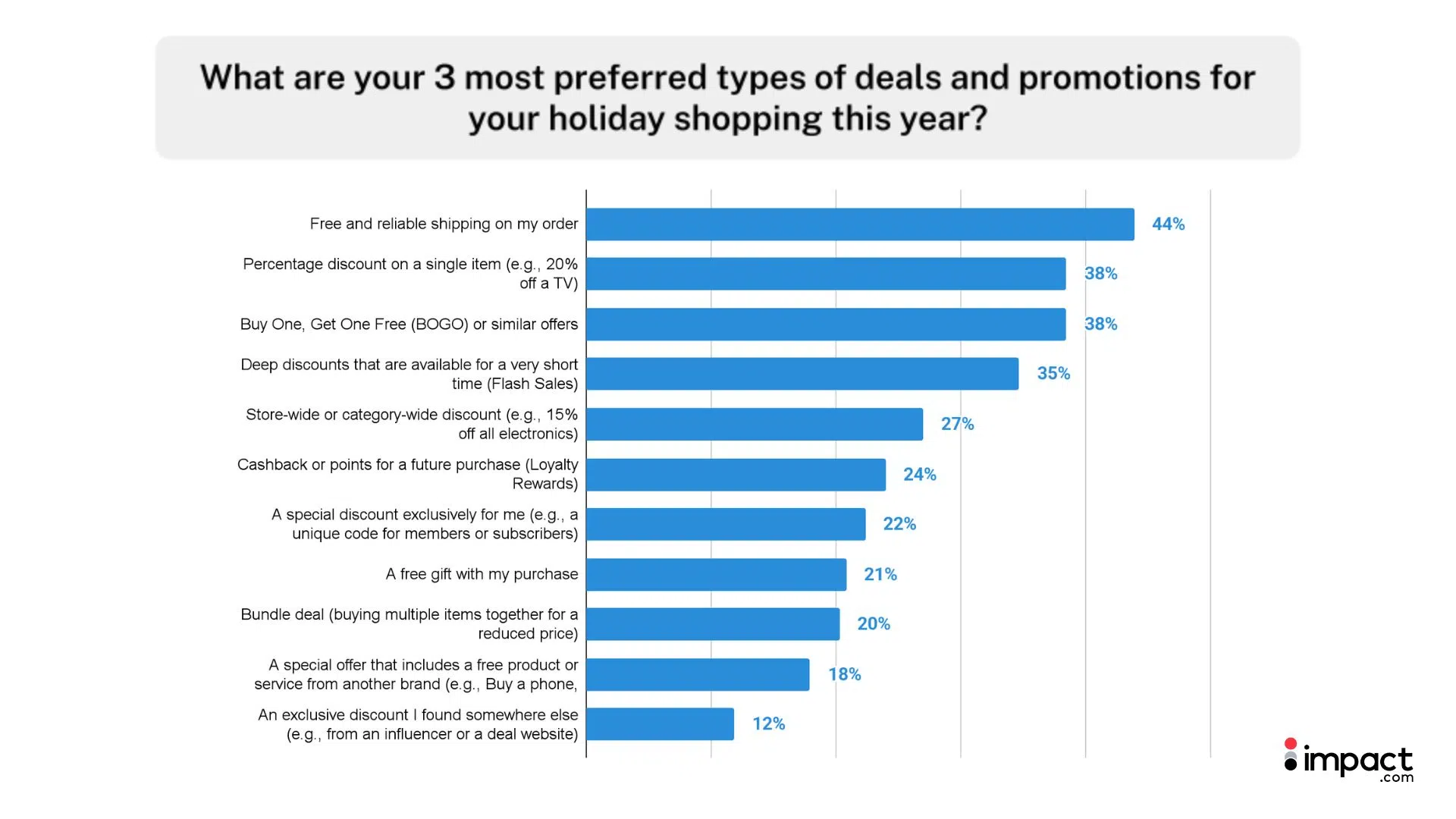

And don’t underestimate the power of exclusive codes. They’re a proven conversion driver, with 61% of shoppers saying they’ll definitely use one if it’s easy to find (43%) or will actively search for one before purchasing (18%).
Millennials are the most determined bargain hunters of all age groups—nearly a quarter (24%) actively seek out codes before they buy.

How to take action
Prioritize partners offering free shipping
Free shipping isn’t just nice to have—it’s the most powerful deal you can promote. When choosing which retailers to feature or negotiating with brand partners, prioritize those that offer it. Then make it a headline benefit. Call it out in article titles, email subject lines, and social captions. It’s a clear, simple perk that removes one of the biggest barriers to purchase.
Secure and flaunt exclusive codes
With 61% of shoppers ready to use a discount code, securing exclusives is one of the best ways to maximize your affiliate earnings.
Push your partners for unique codes just for your audience, then make them impossible to miss. Highlight them in colored boxes, add frictionless “copy code” buttons in articles, and use platform-native features like Instagram’s link sticker or pinned YouTube comments.
For added value, consider a “deal haul” that bundles the best bargains across multiple brands—positioning your content as a one-stop shop for savvy shoppers.
Communicate the value, not just the sale
Spell out the deal so shoppers know exactly why it’s worth clicking. “Get this reader-favorite laptop for 40% off” is far more compelling than “Shop the sale.” This approach taps into what shoppers really want: substantial discounts on high-value products they’ve spent months researching.
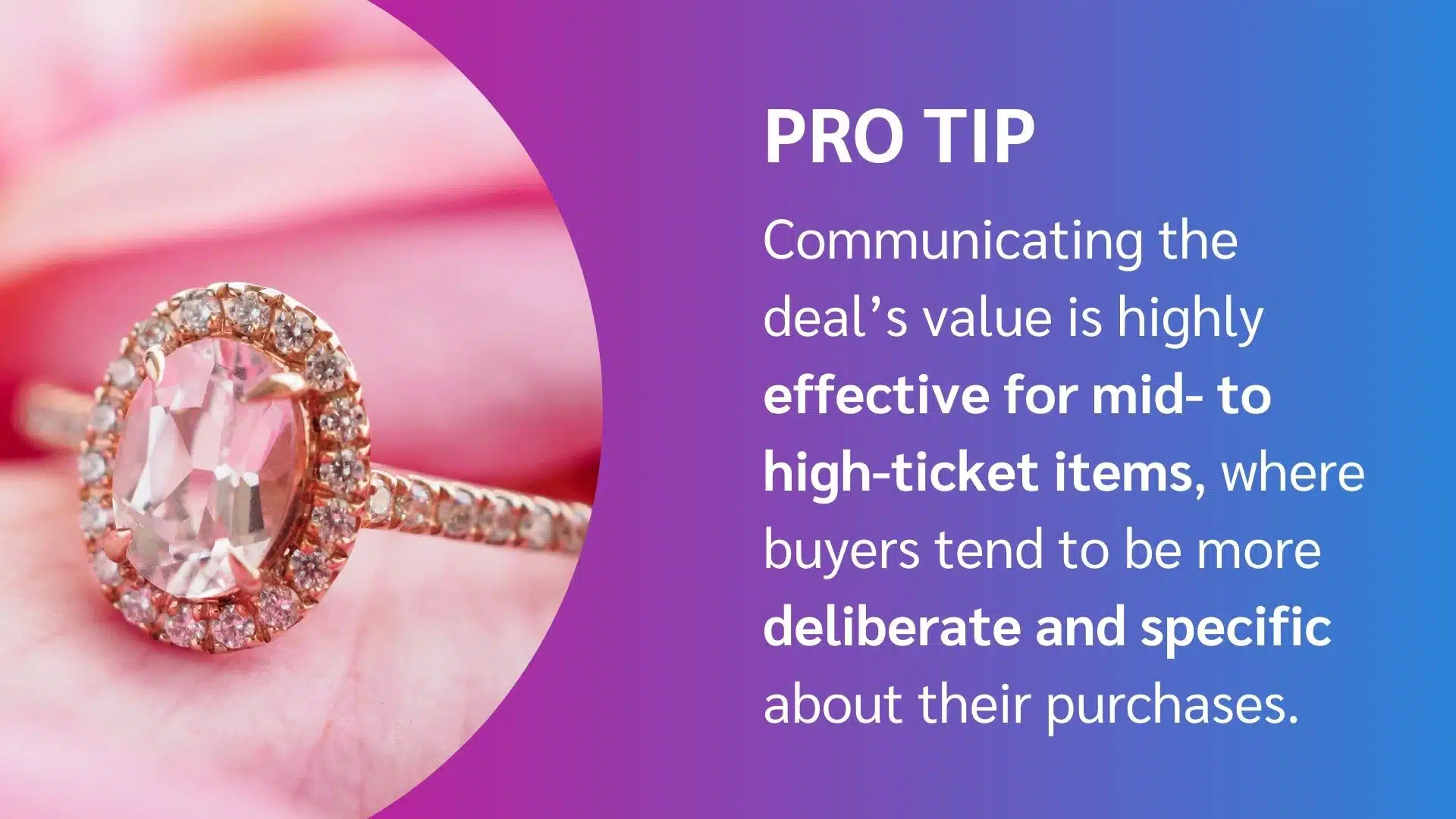
Leverage urgency with flash sales
Deep, short-lived discounts rank among shoppers’ top three deal preferences—so use them to drive buzz. Newsletters and social channels are perfect for quick alerts, while creators can take it further with Stories or live content on TikTok or Instagram. Walking viewers through products in real time builds excitement, sparks engagement, and drives immediate clicks.
Introduce new brands with can’t-miss offers
Nearly 60% of consumers are open to trying new brands if the offer is compelling. That gives you the license to act as a trendsetter. Use the holiday season to spotlight emerging brands offering bold introductory deals.
- For publishers, bundling new products into roundups or deal hauls is a proven way to spotlight emerging brands
- For creators, unboxings and first-impression videos while mentioning the discount will let you showcase those same products in an authentic, personal way
A unique product paired with an irresistible discount delivers standout value to your audience—and can unlock higher commission earnings for you.
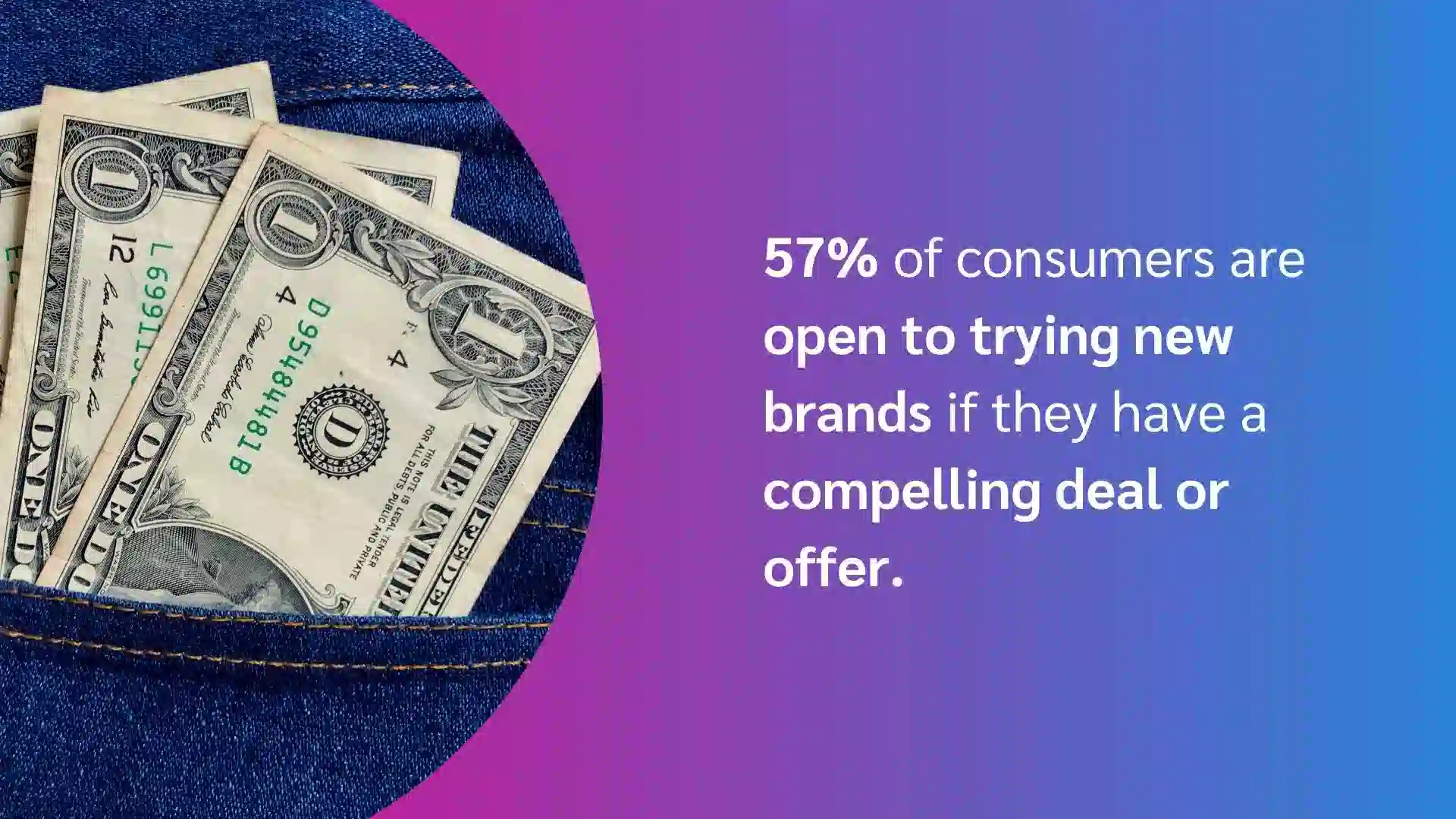
Trend 4: Shoppers are turning to AI and BNPL to shop smarter
To keep up with your competitors, you must understand the tools your audience is already using. Younger shoppers are quickly adopting AI to upgrade their shopping experience. This isn’t a “future trend”—it’s happening now, and it’s a major monetization opportunity for publishers and creators who adapt.
AI is already becoming a key component of the consumer toolkit. Most under age 45 plan to use it this holiday season, and 46% of Gen Z and Millennials are turning to AI specifically to find deals, compare prices, and obtain promotion summaries.
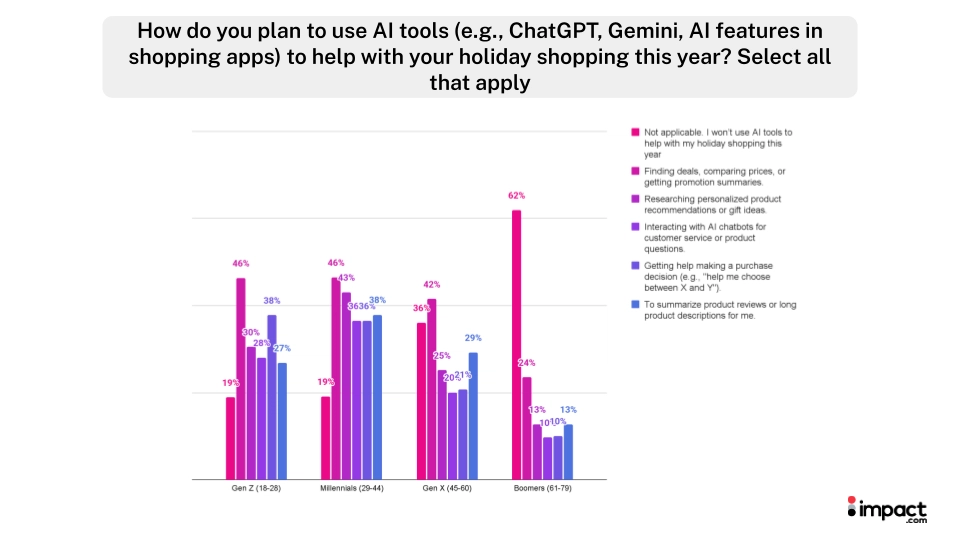
At checkout, use of Buy Now, Pay Later (BNPL) is now mainstream. Nearly a third of shoppers (32%) anticipate using services like Klarna or Afterpay this holiday season.
Shoppers most often turn to BNPL to:
- Manage cash flow (62%)
- Take advantage of a specific promotion or offer (59%)
- Buy more expensive gifts than they can afford upfront (50%)
When publishers and creators make high-ticket items feel within reach, it can translate into more (and larger) commissions.
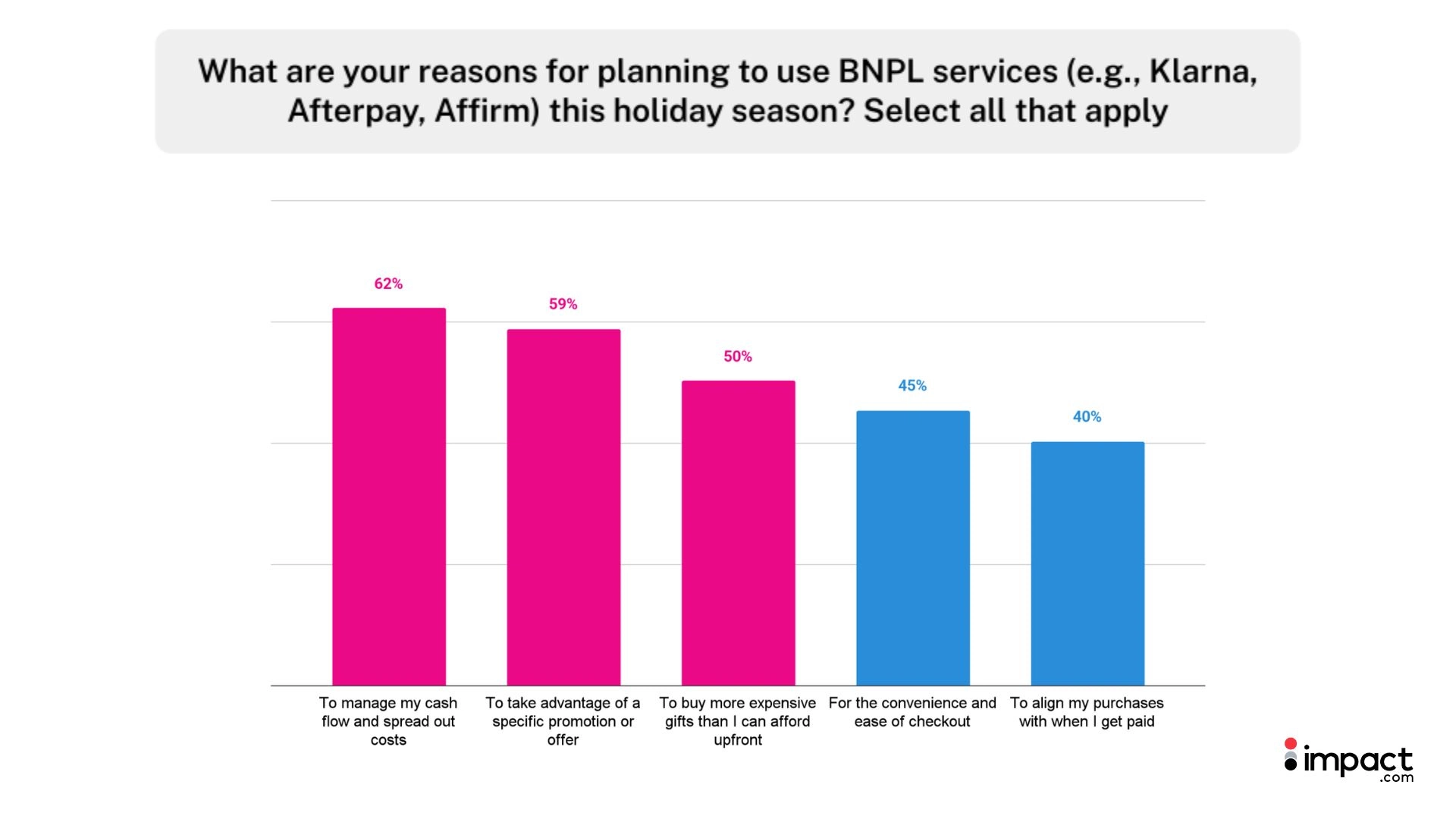
How to take action
Optimize your content for AI summarization
Since almost half of younger shoppers are using AI to find and summarize deals, your content must be easy for algorithms to parse.
For written content, well-structured articles with clear headers, side-by-side tables, and feature breakdowns are ideal for AI to parse.
For multimedia content like video, scripting content with clear takeaways like ‘best under $500’ or ‘most durable for kids’ helps AI tools summarize your recommendations.

HikingGuy’s product comparison between the iPhone and Garmin inReach are primed for AI consumption, including AI-friendly components like clear headers and rich features like tables.
Integrate BNPL into your promotional messaging
Increase conversion rates on big-ticket items simply by highlighting this payment option. When you’re promoting a higher-priced product, mention that the retailer offers BNPL.
To make the price feel more attainable, break down the cost in your video or copy: “You can get this laptop today for just 4 payments of $250!” By calling out flexible payment options, you can capture conversions on products your audience might otherwise scroll past.
Double down on product comparison content
One in four shoppers (25%) now use AI to decide between products. You can meet that behavior head-on with in-depth comparison content—a content format favored by 26% of consumers.
Go further than a basic pros-and-cons list. Use clear headings, side-by-side tables, and direct breakdowns of specs, features, and pricing. A well-structured “Product A vs. Product B” article is an ideal source material for AI tools to analyze and summarize—boosting the chances your recommendation gets surfaced.
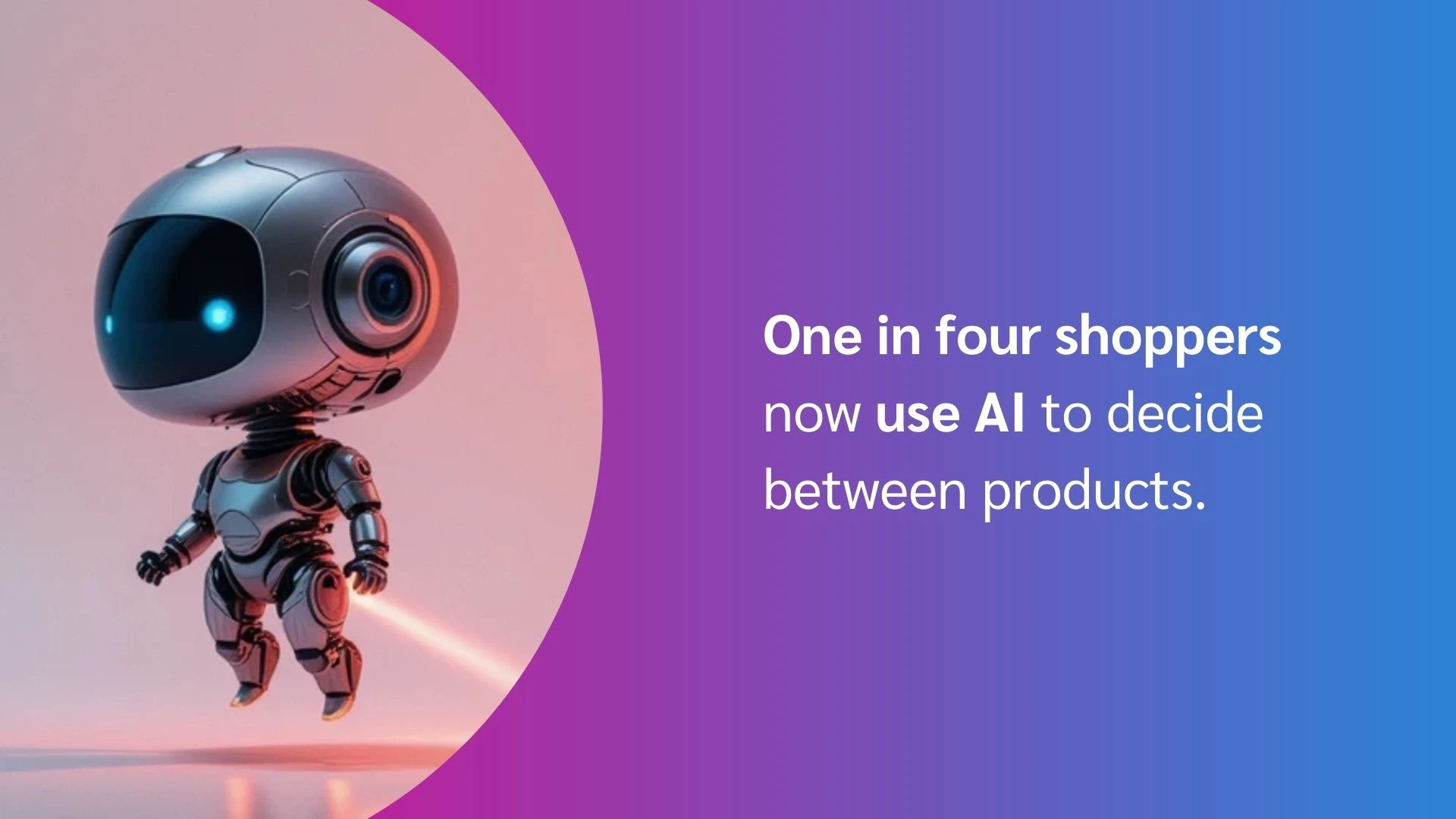
Trend 5: Classic Black Friday product categories reign supreme, but niche opportunities abound
Knowing what people plan to buy is just as important as knowing how they buy. Our data shows that while the classic gift categories are still likely to drive the bulk of holiday sales in 2025, there are profitable opportunities in more practical and niche categories too.
Focusing your content on this mix of the popular and the practical is key to maximizing your revenue.
Consumers still plan on buying the most products in these core holiday shopping categories, similar to last year:
- Apparel, shoes, and accessories (68%)
- Electronics (61%)
- Toys & games (49%)
But the story doesn’t end there. Shoppers are leaning into practicality and self-care with strong interest in gift cards (44%), health & beauty (40%), and home goods & furniture (35%).
Interest in non-physical gifts is also on the rise—20% of shoppers plan to buy travel or experiences, and 13% are looking for subscription boxes. That’s a major opening to stand out with fresh, differentiated content.

How to take action
Focus on the winners
Dedicate a big share of your Cyber Week coverage to the top three categories—apparel, shoes, and accessories; electronics; and toys. These verticals pull the highest demand and give you the largest pool of buyers. Tailor your picks to what resonates with your audience, whether that’s “The Best Tech Deals for Gamers Under $500” or “Top 10 Toys Every Parent Is Grabbing This Year.”
Highlight niche and experiential gifts
Stand out by leaning into the 20% of shoppers searching for experiences or unique finds. A “Gift Guide for the Person Who Has Everything” could showcase subscription boxes, travel deals, or exclusive memberships. For publishers and creators, aligning these picks with your audience’s passions turns novelty into conversions.
Promote gift cards for last-minute wins
With 44% of consumers planning to buy them, gift cards are a massive opportunity. They are especially effective for your last-minute content in December. Partner with brands to promote “buy a gift card, get a bonus” deals, which are perfect for procrastinators.
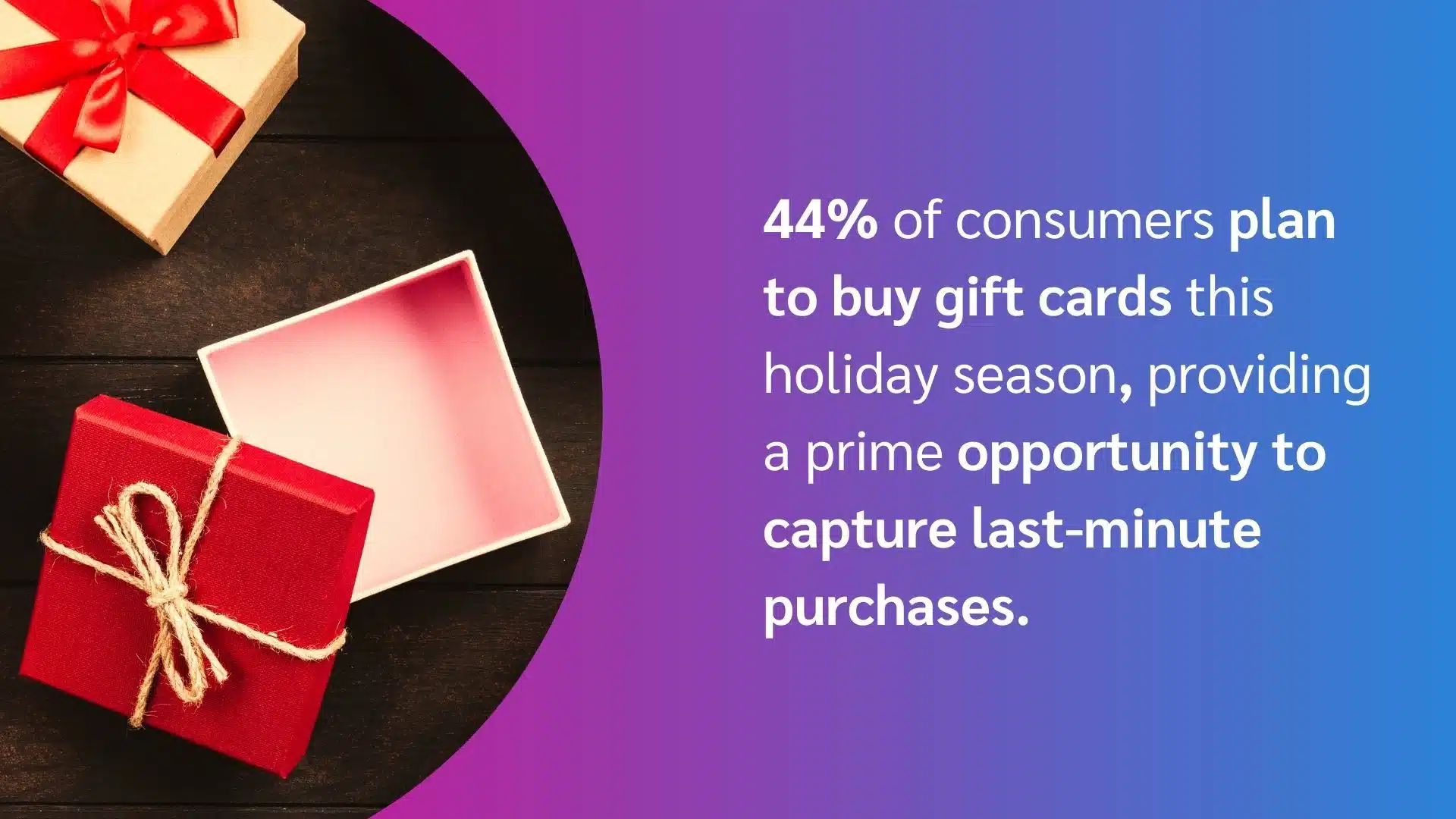
Follow your roadmap to a record-breaking holiday season
Cyber Week 2025 may be the biggest yet, but the real opportunity goes far beyond one week. Shoppers are starting their research earlier, leaning on authentic content from experts like you, and making decisions based on specific, high-value deals.
This presents a clear roadmap: The most profitable Black Friday trends come from understanding your audience and serving their needs with precision.
By syncing your content calendar with the full holiday season, doubling down on valuable reviews and comparisons, and spotlighting the deals that actually drive clicks, you can position yourself as a go-to resource. Lean into these insights to plan smarter, create with confidence, and make 2025 your strongest holiday season yet.
Learn more about maximizing your commerce content success:
- Negotiating commissions: How successful publishers broker better contracts with brands (blog)
- Creator’s guide: 6 best places to share affiliate links for maximum earnings (blog)
- Searching smarter: How to identify top-performing affiliate brands to promote on impact.com (blog)
FAQs
Start with speed and structure. A fast, mobile-friendly site keeps shoppers engaged, while clear navigation and prominent CTAs make it easy to click through.
With 23% of shoppers relying on search engines at the research stage and 46% of Gen Z and Millennials turning to AI to find deals, you must build with SEO and AI search in mind. Use comparison tables, “best of” lists, and clear H2/H3 headings so both users and AI tools can parse your content.
Add schema markup (e.g., product, review, FAQ) to boost search visibility and win rich snippets. Optimize for long-tail, intent-driven queries that mirror how shoppers actually search, such as “best noise-canceling headphones under $200” or “Cyber Week skincare deals for sensitive skin.”
Finally, keep it fresh and accurate. To maintain trust and rankings, make your affiliate links current, stock products, and update deals. A site that’s fast, structured, and optimized for both search engines and human readers gives you the best shot at higher sales and affiliate earnings.
Email is your direct line to ready-to-buy audiences. Segment your lists and send deal-specific campaigns with urgent subject lines (e.g., “Ends Tonight: 40% Off Reader-Favorite Laptops”).
On-site, use banners, sticky bars, and pop-ups to highlight limited-time offers and exclusive codes. The goal is to keep deals front and center wherever your audience interacts with your content.
Lean into what your audience trusts you for—authentic recommendations. Short-form videos, “shop with me” content, and live streams let you demo products and walk through deals in real time. Pair these with easy-to-find affiliate links using native features like Instagram’s link stickers, TikTok’s shopping tools, or pinned YouTube comments.
Start with clarity. Use high-intent keywords in your titles (like “Best Cyber Week TV Deals Under $500”) so your content surfaces in search and feels immediately relevant. Structure your videos with timestamps or chapters so viewers can quickly jump to the products they care about.
Then, make it easy for shoppers to act. Place affiliate links in pinned comments, video descriptions, and even on-screen callouts, and highlight exclusive discount codes to boost clicks. Convenience is key—viewers should never have to hunt for the next step.
Finally, tap into urgency and authenticity. Live shopping streams on YouTube, Instagram, or TikTok are great for walking viewers through deals in real time, while curated gift guides or “shop with me” videos let you showcase the products most aligned with your audience. Pairing clear recommendations with timely promotions is the formula for higher conversions.
Mix broad appeal with relevance. Cover high-demand categories like apparel, shoes, and accessories (68%); electronics (61%); and toys & games (49%)—but choose products that align with your audience’s interests. Layer in practical and niche items (home goods, skincare, subscription boxes, travel) to stand out. Highlight deals that consumers value most, such as free shipping, exclusive codes, and flash sales to push shoppers from browsing to buying.
The “big three” remain the strongest revenue drivers: apparel, shoes, and accessories (68%), electronics (61%), and toys & games (49%). Beyond that, don’t overlook gift cards (44%), health & beauty (40%), and home goods (35%). For differentiation, spotlight experiences (20%) and subscription boxes (13%)—these categories are growing and less saturated.
Earlier than you think. Over half of shoppers (51%) start research by the end of October, and nearly three-quarters (75%) by mid-November. Publish gift guides, reviews, and comparisons in September and October to capture early traffic. Then, ramp up high-urgency content—deal alerts, flash sales, and last-minute gift guides—during Cyber Week and into December.
